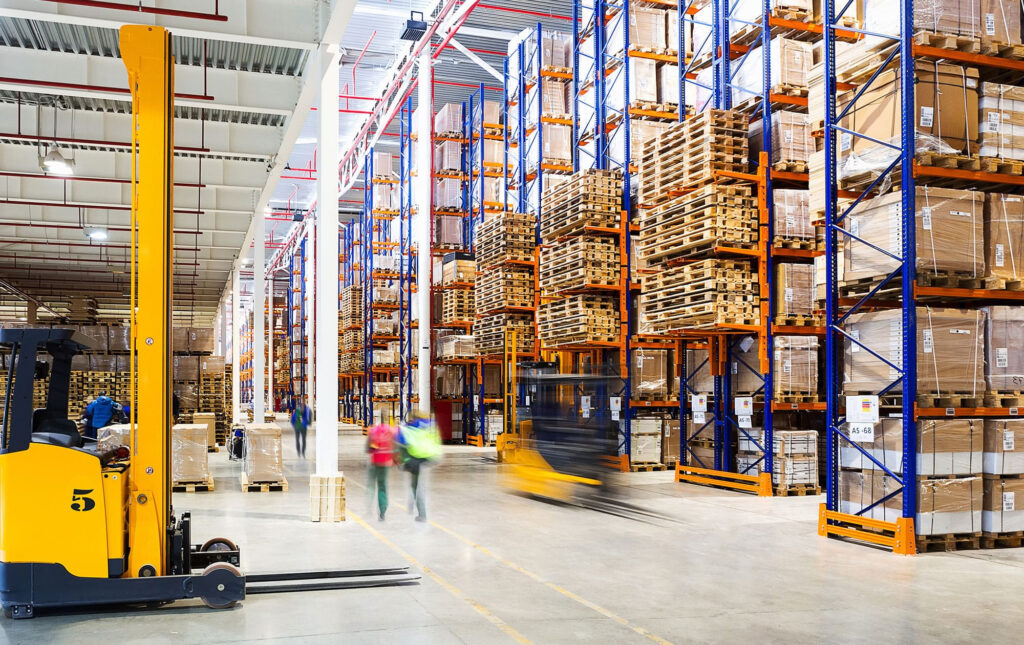
Artificial intelligence Technologies have variety of uses. Markets across the globe deploy AI widely across consumers, enterprises, and governments. Market research firm Tractica defines AI in a recent report as an umbrella term that includes multiple technologies, such as machine learning, deep learning, computer vision, natural language processing (NLP), machine reasoning, and strong AI.

The repetitive and intensive tasks in the typical warehouse make it a solid opportunity to use AI to a good advantage.
Here are six ways AI is transforming warehouse management.
1.Productivity
Above all, an average warehouse with three warehouse workers picking and packing has an average error rate of 15.5%. Therefore, AI has the potential to transform warehouse management by enhancing productivity in pick-n-pack processes. Through machine learning, managers can leverage the efficiency of most productive pickers and develop a fully integrated system-directed solution. Furthermore, warehouses that implement automated management systems reduce errors and financial losses, bringing this rate down to 9.4%. For example, a warehouse that handles a total order value of $5,000,000 could save $305,000 every year. T-Pace for warehouses is a slotting software product providing operating rules. Implementation of these operating rules takes place inside the smart houses. Overall, recommending an SKU strategy based on historical reports.
2. Inventory
On average, a warehouse with an inventory value of $1,000,000 spends $46,817 in inventory process expenses annually. AI will also transform warehouse management by freeing up money previously spent on inventory control for other business growth opportunities. Additionally, $35,066 is the reduced expense for an automated warehouse with wireless handheld computers. Overall, saving a single warehouse $11,751 per year which could be potentially invested in business development activities.
3. Effective Communication
Automated systems using AI and machine learning algorithms can communicate at an exponentially greater rate than human operatives. The world’s largest online grocery store “Ocado” allows wireless 4G over 1,000-member fleet of pick-and-pack robots. to communicate more effectively. Inside their fully automated warehouse, these robots communicate and converse back-and-forth at a mesmerising 10 times per second, within a 150m radius of each other. Overall, eliminating human inaccuracies. Thus, and profits have the potential to grow. In the US, T-Pace for retailors facilitates communication between the storefront and backroom to optimise inventory and shelf-management.
4. Warehouse Operations
Another way AI is set to transform warehouse management is by augmenting the logistics – i.e. calculating the number of pallets or packages that need to be moved on any given day. While this calculation previously relied on variables such as operator skill level – which is susceptible to error – machine-learning algorithms can now enable detailed stock movement forecasting and management to fine-tune material handling. Multiple warehouse operations are expected to become automated by 2030 with AI replacing thousands of employees when it comes to repetitive activities. In total, 73 million of US jobs will become automated. The operations with the highest risk of job loss to the robots are; predictable physical activities (81%) processing data (69%) and collecting data (64%).
5. Wages
Perhaps the most controversial way in which AI will transform warehouse management is in the reduction of payroll expenses. It’s not just warehouse operations and running costs that could save money with the support of AI; money spent on employee wages could also be saved. The total savings on employee wages, who currently work on warehouse activities that could become automated, is a huge $15.8 trillion worldwide with the U.S saving up to $2.7 trillion.
6. Robot Workers
Imagine a smart warehouse where staff could operate on 5 minutes of charging time per hour rather than 8 hours of sleep. Amazon’s revolutionary Kiva robots need 5 minutes of charging time every hour which means an increase in productivity and KPIs are more likely to be met.
Warehouse management is on its way to becoming more agile, with faster responses to logistical demands of material items and personnel, and more scalable in terms of finding new solutions for greater volume and flow of product. TEMPO works with clients to transform manual and time-consuming processes into automated, streamlined and more effective operations through the strategic application of computer vision software, robotics, and process innovation tools. Call us now to know how you can make your warehouse smart and start cutting costs.
Related Articles:


